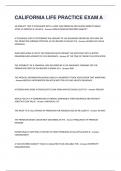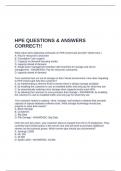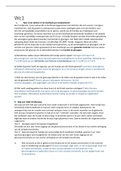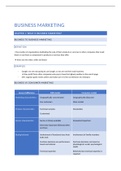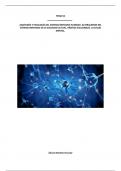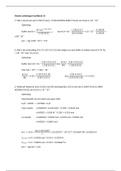How did Hitler gain power in 1933?
What were the problems facing Weimar politicians
from 1929?
● System of proportional representation
● President use article 48 when coalition government/parties could not agree
● Gustav Stresemann = queen
● Shaky first few years of the Weimar republic
● Germany in its ‘Golden era’ = society and art flourish
● Wall Street Crash = crashed the Weimar republic due to it being based on loans from
the US
From 1929, The Weimar was unstable and From 1929, The Weimar was stable and it
doomed to fail was external circumstances which
weakened the Republic
● During the great depression, the ● October 3rd 1929: After two months of
government lost majority in the serious ill health, foreign minister Gustav
Reichstag, so the President had to Stresemann suffers a fatal stroke, aged
invoke Article 48 to pass any laws, so 51. The foreign press mourns his loss,
very little was done to deal with the GD. hailing him as a champion of the “new
● The Young Plan Germany”.
○ Lose trust in government ● October 24th 1929: The Wall Street
● Death of Gustav Stresemann led to stock exchange in New York crashes,
political and governmental confusion later leading to the Great Depression.
● Constitution ○ 1930: The Smoot-Hawley Tariff Act
○ Article 48 - leads to dictatorship raised US tariffs on numerous
○ Article 49 - in case of uprising imports.
violence can be used to deal with it ○ The Great Depression only came to
an end when rearmament towards
the outbreak of conflict in 1939
created an increase in demand, thus
increasing sales and employment.
■ World trade slumped by 60%
in 1930.
■ Worldwide GDP (the total
wealth of nations) fell by 15%
from 1929 to 1932.
○ Much of the Weimar Republic’s
recovery was due to a steady flow of
American dollars into its economy.
○ As the flow of American money dried
up, Germany could no longer meet
their financial responsibilities.
Businesses failed, unemployment
, rates rose and Germany faced
another devastating economic crisis.
■ Germany lost US financial
support in the form of huge
loans negotiated in the Dawes
Plan of 1924 and the Young
Plan of 1929.
○ After October 1929, the
Smoot-Hawley Tariff Act denied
Germany access to markets in the
USA.
● May 1931: Unemployment figures in
Germany reach four million.
● May 11th 1931: Austria’s largest bank
collapses and declares bankruptcy. The
flow-on effects lead to a banking crisis in
Germany.
Stable:
● Military support
● Economic stability
● Higher standard of living
● Fewer protests
How did support for the Nazis grow after 1929?
The principal ideas in Mein Kampf and advocated by Hitler in the
1920s.
● Germany was in ‘ruins’
○ The ‘Aryan’ ideal allowed Hitler to blame and use other groups mainly Jews
and Communists (he presented them as working together) as scapegoats for
Germany’s problems.
○ Blamed the current government and generally the Weimar Republic for
economic problems
● Change of political system
○ Hitler believed that the democracy as followed by the Weimar Republic was
unfit for Germany and was reminiscent of the Kaiser days (2nd Reich). He
thought that a system with himself as the sole leader (Führer) was a better fit
for Germany.
● Treaty of Versailles
○ Germany had been ‘stabbed in the back’ by the November criminals (those
who signed the armistice). Reparations arising from the guilt clause were the
burden on Germany's economy which stopped it from flourishing.
○ Lebensraum - a foreign policy to unite all German speakers in Europe. This
went against anschluss with Austria. It was not only a social policy that
would allow a feeling of national pride and unity for the population but also an
economic policy since the land gained would be used for farming which would
boost Germany’s economy and allow it to stop relying on the help of foreign
nations (the cause of the strength of the Great Depression in Germany).
● Propaganda
, ○ Hitler puts an emphasis on the communication between a political party and
ordinary people. He says that it must appeal to the emotions and that it needs
to keep repeating it's simple message.
The structure of the Nazi Party and the role it played in the period
1919–1929.
● Hitler and the party members promised to reestablish Germany's power and to
recover the country from the crisis and ruin. They were very convincing and quickly
gained many followers as they changed their strategy in 1924
● Furtheron, the NSDAP gained the support of a powerful rightwing official
● Propaganda was spread like never before
● They were appealing to middle- to low class workers due to their agenda
● The party only flourished when there were economic problems in the 1920s
● Hitler eventually gained investors
● The NSDAP was very popular in Bavaria, its origin point
● The Nazi party changed from within, giving each of his members a role in infiltrating
the democratic system
● The NSDAP seemed like the heroes after the failure of the grand coalition
The reasons why support for Nazism grew after 1929.
● Propaganda
○ Used throughout the late 1920’s and early 1930’s
○ To boost Hitler’s image, exploit people’s fear of uncertainty and instability
○ Joseph Goebbels used a combination of modern media, such as films and
radio, and traditional campaigning tools such as posters and newspapers.
○ Hilter Myth: An image of Hitler as a strong, stable leader that would save
Germany and make it a great power again.
● Economic instability
○ Wages fell by 39% from 1929 to 1932
○ Overall a decline in living standards combined with the resulting political
instability, left people looking for change. This enhanced the attractiveness of
the Nazis propaganda messages.
● Political instability
○ Grand Coalition:
■ June 1928: Hermann Müller had created the ‘grand coalition’ to rule
Germany.
■ But the parties could not agree on key policies and Müller struggled to
get support for legislation.
■ So he asked Paul Hindenburg to use Article 48 to try and restore
stability but when he refused Müller resigned on 27 March 1930.
● Conservative elite
○ The old ruling class and new business class
○ Became increasingly frustrated with their lack of real power and the rise of
communism in the 1920s
○ Believed that a return to authoritarian rule was the only stable future for
Germany which would protect their power and money.
● The SA and the SS
, ○ 1921: The Nazi Party’s paramilitary organisation, the Sturmabteilung, were
formed and known as ‘brownshirts’.
○ 1925: Hitler also established the Schutzstaffel, otherwise known as the SS,
created as Hitler’s personal bodyguards.
■ 1929: Heinrich Himmler took over the organisation, and expanded it
dramatically.The SS saw themselves as the ultimate defenders of the
‘Aryan’ race and Nazi ideology. They terrorised and aimed to destroy
any person or group that threatened this.
○ The SA and the SS became symbols of terror. The Nazi Party used these
two forces to terrify their opposition into subordination, slowly eliminate them
entirely, or scare people into supporting them.
How was Hitler appointed Chancellor?
Timeline
March 1932: Paul Hindenburg (19.4 mil. votes) beat Hitler (13.4 mil. votes) and became
president
● Shows improvement with Hitler’s reputation
May 1932: Bruning had lost popularity between 1930-32 because he had reduced
unemployment benefits and increased taxes. He did not have a majority in the
Reichstag so was dependent on Hidenburg’s decree. Following the advice of General
von Schleicher, Hindenburg removed Bruning.
May 1932: Von Papen was appointed Chancellor. Only had 68 supporters in the Reichstag.
July 1932: Elections held by Von Papen to gain more support but the Nazis won 230 seats
and were the largest party in the Reichstag. Hitler demanded the post of chancellor but
Hindenburg refused as he thought the Nazis were too violent so Von Papen remained
Chancellor.
July-Nov. 1932: Papen Government - the Reichstag distrusted Papen which made him
dependent on the presidential decree (article 48) and Hindenburg’s support.
Nov. 1932: Elections held by Von Papen to gain more support he won fewer seats but the
Nazis’ seats fell to 196, partly due to shortage of funds. Hindenburg asked to close the
Reichstag and rule by decree.
Dec. 1932 - Jan. 1933: Von Schleicher is appointed Chancellor by Hindenburg.
Jan. 28th 1933: Von Schleicher resigns as chancellor.
Jan. 30th 1933: Hitler is appointed chancellor by Hindenburg persuaded by Von Papen
which said the alternative would be a civil war.
Key People Key factor to Hitler’s Not key factor to
/ Groups rise to power Hitler’s rise to power
Hindenburg ● Trigger cause - through
firing bruning which set out
a chain reaction
Weimar ● The politicians allowed the ● German politicians had to
politicians crisis to gain control over be careful to follow US
Germany in the first place, orders in order to
which was the reason for maintain their loans

